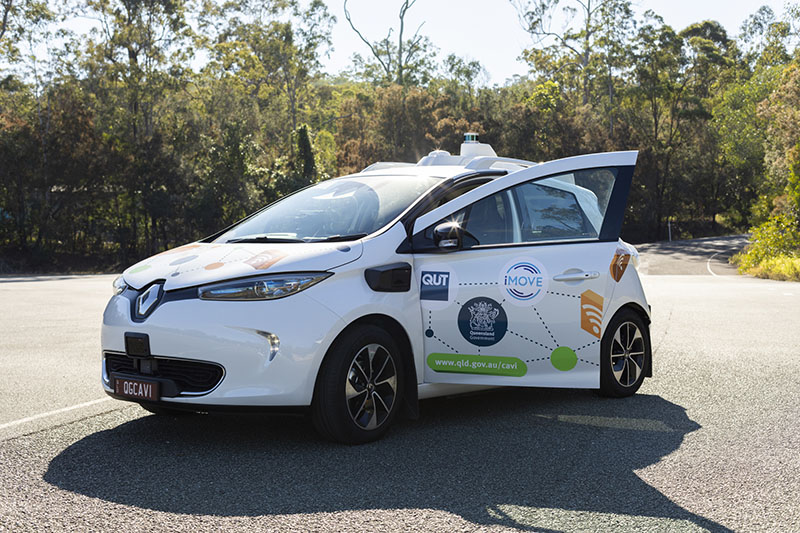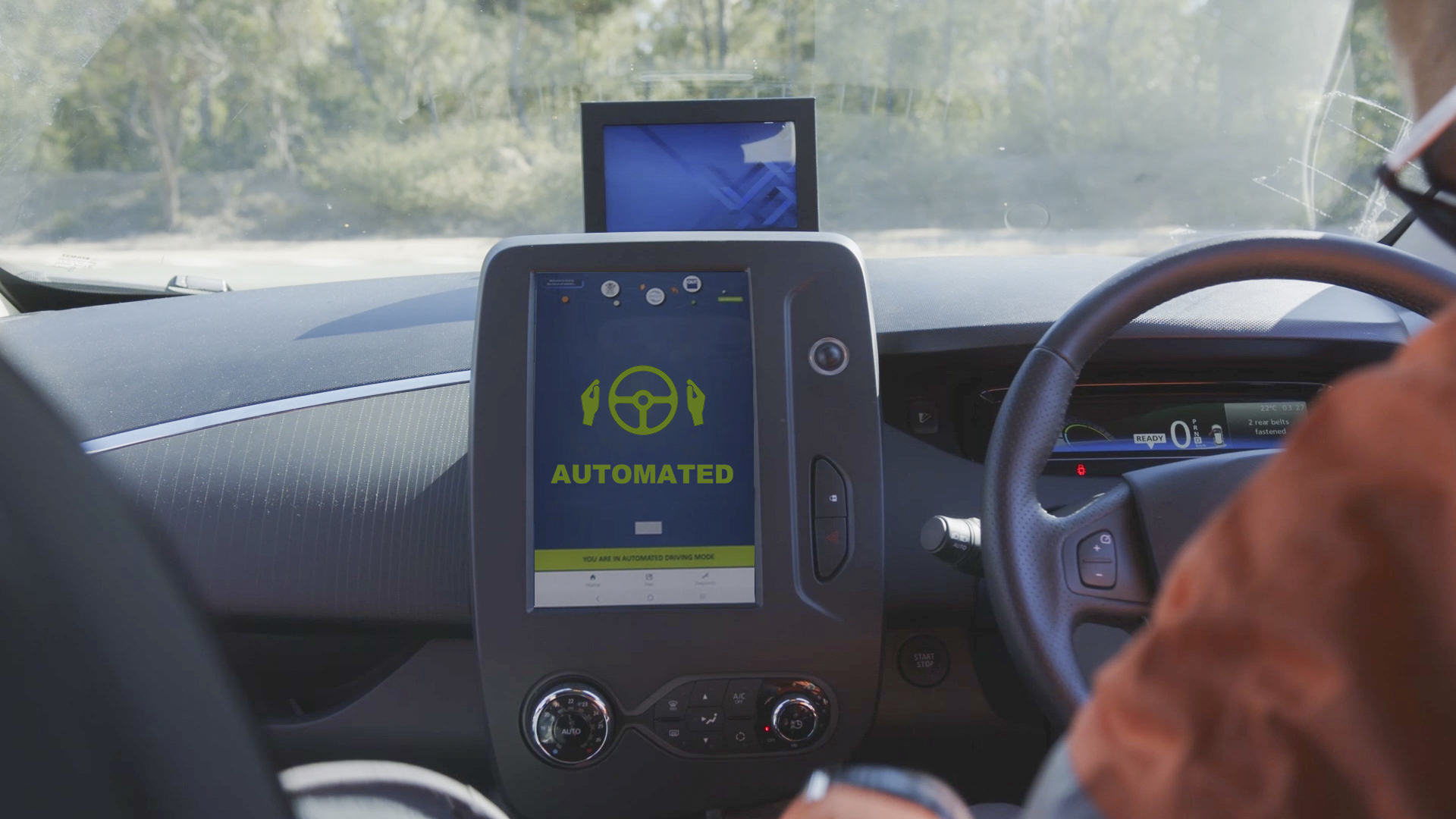Cooperative and Highly Automated Driving Pilot
Cooperative (or connected) and Automated Vehicles (CAV) offer the potential to significantly reduce crashes, caused by driver error; they also have the potential to introduce new safety challenges.
To understand these new safety challenges and to inform where we are headed, the Cooperative and Highly Automated Driving (CHAD) Pilot, is being delivered by the Department of Transport and Main Roads, in partnership with the Queensland University of Technology (QUT), iMOVE Australia and Motor Accident Insurance Commission (MAIC).
The CHAD pilot seeks to broadly identify the potential impacts of introducing CAVs on Queensland roads with a focus on:
- physical road infrastructure interaction
- digital infrastructure Interaction
- interaction with other road users
- driver behaviour (the human to machine interface).
This pilot includes 2 research vehicles, ZOE1 and ZOE2, and a local expertise base to conduct a comprehensive safety study and deliver on its objectives to grow government and stakeholders' technical and organisational readiness, as well as increase public awareness of the CAV technologies through public demonstrations.
ZOE1

The ZOE1 research platform is built on an electric Renault ZOE and is not automated but includes sensors and algorithms likely to be used in an automated vehicle. ZOE1's research is enabling the department to collect data on the road infrastructure to help prepare for the safe adoption of automated vehicles in Queensland.
ZOE1 has been modified and is fitted with cutting edge sensors such as LiDAR, Computer Vision, GPS-RTK (Global Positioning System – Real Time Kinematic) and IMU (Inertial Measurement Unit).
ZOE1 has already collected data over approximately 1,200km of urban and rural roads in southeast Queensland. This data was analysed using state of the art sensor processing algorithms. Using this data, the team at QUT’s Centre for Robotics tested automated systems’ responses to signs/lines/signals (what they call static assets), how well the automated systems performed or where they fail, as compared with a human driver’s response.
ZOE2

The ZOE2 research vehicle, also an electric Renault ZOE, is a prototype Society of Automotive Engineers (SAE) Level 4 vehicle which allows the automated system to be given control within predefined geographical areas. Outside these areas the driver is required to take back control.
This prototype was built by the French research institute, VEDECOM, and is jointly managed by the Department of Transport and Main Roads and QUT to explore several safety scenarios.
ZOE2 features
ZOE2 can be driven as:
- a standard vehicle
- in data recording mode
- in simulation mode
- in highly automated modes (SAE Level 4)
- cooperative and automated mode.
The vehicle provides adequate warning time before handing back the control to the driver at the end of its predefined route.
It meets Australian Design Rules requirements for vehicles imported into Australia and:
- is allowed to travel up to 50km/h in automated driving mode
- has European compliant cooperative intelligent transport system (C-ITS) equipment, which means the vehicle can speak to infrastructure such as a signalised intersection
- collects and makes available all its vehicle data for subsequent analysis
- can be upgraded when new automated features are developed by VEDECOM, such as overtaking or pull-over features.
ZOE2 testing scope
ZOE2 will test:
- How will an automated vehicle respond to other drivers and road users?
- How will a driver respond when the automated vehicle requests the driver take back control?
- Is an automated vehicle safer in a cooperative environment (when it can communicate with our infrastructure and other users)?
Why purpose-built rather than a ready-built automatic vehicle?
There are no commercial vehicles currently built to level 4 automation (highly automated). ZOE2 is the fourth level 4 vehicle made by VEDECOM.
Access to ZOE2's systems and data allows for a better understanding of cooperative and automated vehicles.
ZOE2 demonstrations
ZOE2 is driven by pre-qualified test drivers on public roads, and on test roads at the Mt Cotton Mobility Centre of Excellence, near Brisbane. ZOE2 will also be used in demonstrations in south east and regional Queensland.
For more information on ZOE2 and upcoming demonstrations, email ContactCAVI@tmr.qld.gov.au

Interior console of the automated vehicle ZOE2


